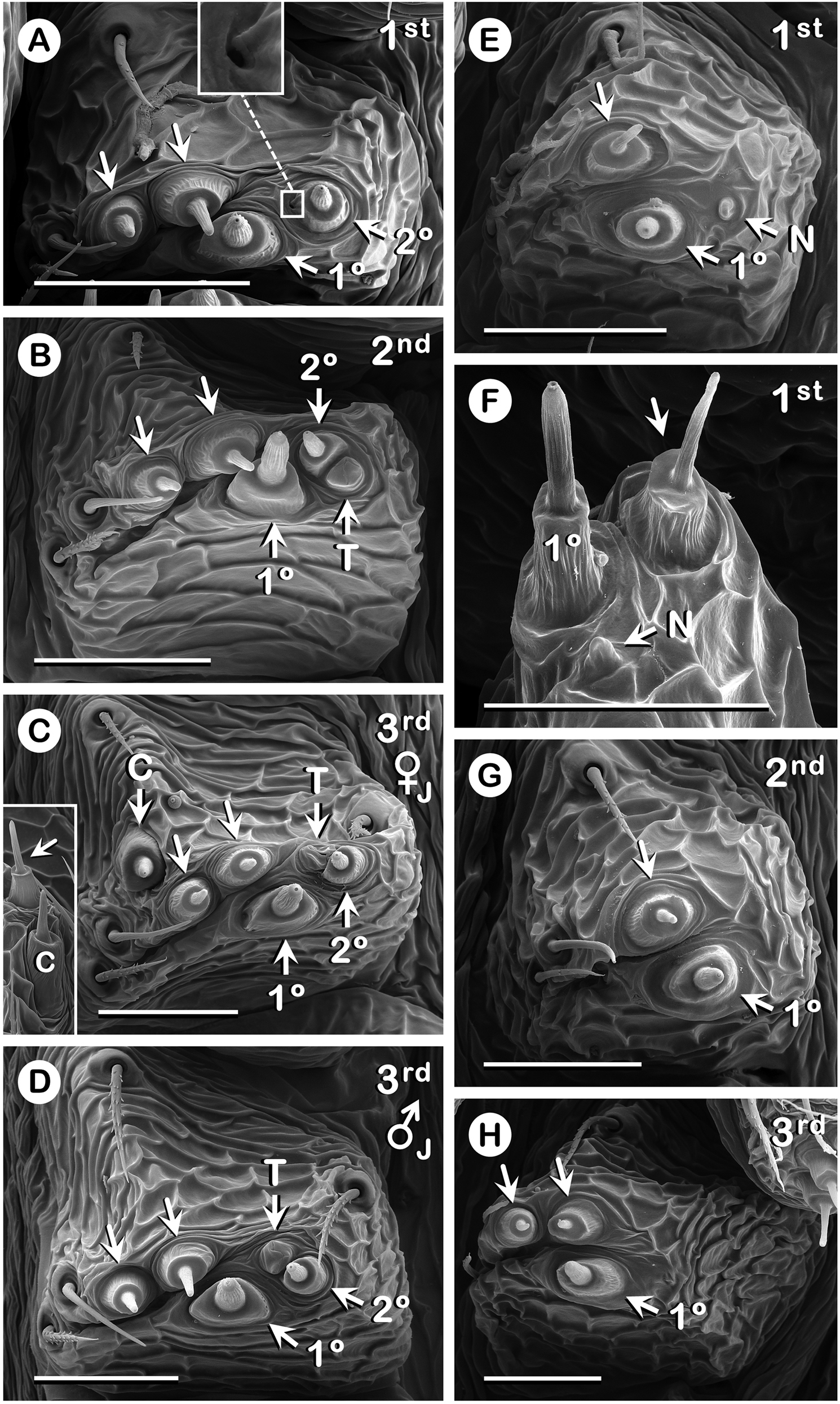
|
||
|
PMS of 1st to 3rd instars of Australomimetus spinosus and Australomimetus djuka. All unlabeled arrows point to non-T-AAC spigots. A–D. A. spinosus. A. Boxed region, magnified in inset, shows putative 2° MiA tartipore primordium. B–D. 2° MiA spigot (2°) and 2° MiA tartipore (T) switched positions from 2nd to 3rd stadium. This switching continued in later stadia (Fig. 7). C.CY spigots first appeared in 3rd instars of A. spinosus. Same CY spigot (C) and closest AC spigot (unlabeled arrow) shown from two perspectives. E–H. A. djuka. E, F. Same PMS shown from two perspectives. Note phylogenetic 2° MiA nubbin (N) in position occupied by 2° MiA spigot in A. spinosus (A). B, C, E, F. Left PMS. A, D, G, H. Right PMS (image flipped). 1°, 1° MiA spigot; 2°, 2° MiA spigot; C, CY spigot; N, 2° MiA nubbin (phylogenetic); T, 2° MiA tartipore. All scale bars 20 µm. See also Abbreviations and terminology (‘Spinning apparatus abbreviations’) and Results (Convention 3 in ‘Conventions applied…’). |